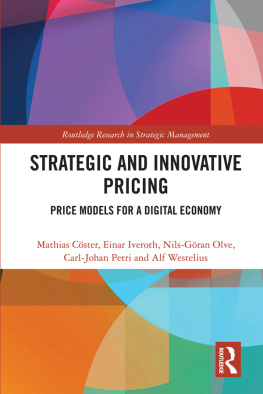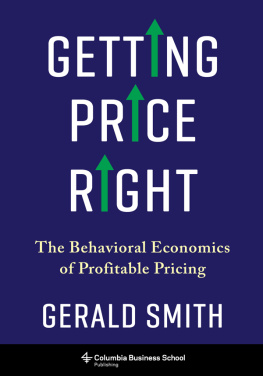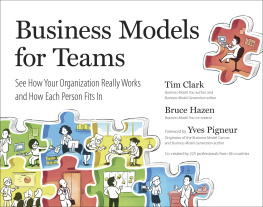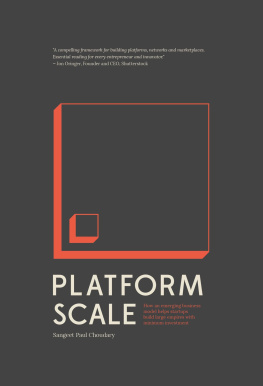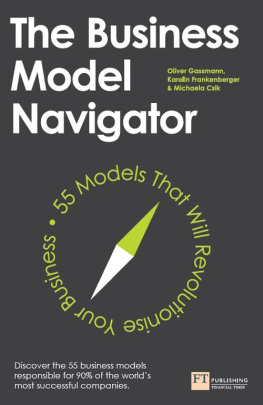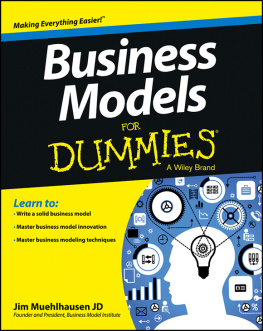1
A New Perspective on Pricing
This is a book about strategic pricing in the digital economy, and it provides a guide on how to explore as well as execute strategic pricing to excel in an increasingly dynamic and digitised business environment, while at the same time developing and deepening relations with contract partners. The secret lies in crafting as an underlying theme.
Several years of successful research and consultancy with private and public organisations were the testbed for our approach, which rests on three interconnected levels of analysis. First, the book shows how to explore the environment, using a business-ecology perspective (business models, to realise and monetise the business model and its value offering, making the organisation and its partnerships economically sustainable. Tools pertaining to the three levels of analyses are applied in rich case studies and examples from different countries, and the book includes guidelines on how to use them.
Business ecologies, business models and price models will be used together as a three-step sequence for analysing and articulating relations not only with customers, business partners and between different units within an organisation, but also with trends, ideas and models in the environment that influence the business models and price models one employs, and their viability.
In the first part of the book (joint value creation (and where digitisation often is a key enabler). The price model equaliser aids in identifying and discussing such aspects of a deal as the scope of offerings, duration of contracts and the attributes prices should be linked to. There is often unexplored potential for innovations in pricing, better adapted to the needs and preconditions of buyers, sellers and business partners. Pricing thus can serve to realise business models in ways many organisations do not now exploit. Due to differences between buyers and sellers, well-designed price models may be part of win-win contracts that both parties find preferable to traditional price models.
At the end of risk, which obviously will always be important in contracts that regulate payments and how economic values are shared. The business models we find most interesting invariably involve joint value creation, where several firms, including buyers, impact value creation over time through their actions. Price models create incentives and influence risk sharing. We find them an under-researched field of study and regard our proposals as a first step towards rectifying that deficiency.
In the second part of this book, we turn to a rich selection of practical cases in order to discuss both the individual parts of our price model equaliser and the joint configuration of its attributes. Most of these come from our own practice, and we have been able to observe how practitioners have been able to absorb and apply the models we propose.
By strategic, we mean that pricing will have effects beyond a particular business transaction. Through linking prices to different aspects of the offering, a price model defines it and influences how it is conceived by both seller and buyer, and in this way shapes the identity of both and the preconditions for a continued business relation between them. It also provides incentives for exploring joint value creation, for instance in the areas of service and accessory sales. While not new, such insights have proved particularly interesting to practitioners we have met for reasons related to other current debates, such as value capture, risk management, transparency and open-book accounting.
By the digital economy, we mean a society based on digital computing technologies, not just shaped by the widespread use of the Internet but increasingly involving embedded computers and sensors that communicate via digital channels to control and monitor physical resources, processes, activities and behaviour, and where people take it for granted that data is recorded and analysed regardless of time and place. This can both pose threats and challenges, enable new business practices and restrict existing ones. For relations between organisations and units within them, digitisation presents previously unimagined opportunities to monitor and price specific aspects of a business transaction, making it apparent how prices provide incentives for buyers and sellers. Such exploration of digitisation and pricing can uncover aspects that, in turn, can trigger changes to not only an organisations offering as such, but also necessary changes to relations to actors and ideas in the ecology, changes to the business model as well as the overall strategy. In this way, and as we will communicate and explain in more detail throughout the book, digitisation and pricing can be a key-enabler for innovation and a long-term sustainable and financially viable organisation.
Although this is not a book about organisational control through (internal) transfer pricing or purchasing practices, our three-step perspective of business ecology, business model and price model highlights how prices may determine division of labour and thus co-creation of value among business partners. In this way, pricing can be seen as a skill impacting the sustainability of an organisation and even an economy. Is market efficiency through price level competition, with a survival of the fittest attitude, always the best path to a sustainable society? Will we see more of multi-year, obligational contracts where firms and government organ-isations use price models to define joint value creation?
Following this brief overview, this initial chapter will now discuss some of the observations and contacts which led us to start on our journey into innovative pricing ten years ago. We highlight what many of us observed in markets and explain briefly how we came to work in this field.
Probably, mobile-phone contracts introduced many of us to the idea that price models could differ between suppliers and that they were becoming competitive tools. A monthly fee plus variable cost for calls, messages etc.or a fixed package? Unlimited surfing? A new phone included? How many months before you can exit the contract? Compared to the fee structures for the old fixed-line phone, often provided by a government-run monopoly, many were bewildered. Bewilderment was reinforced as the technology spread quicklyin Western countries there are often more mobile phone contracts than inhabitantsand price-model variations multiplied.
There have been reasons for this new price competition. Versatile new generations of phones meant that some were attracted by the phone itself, some saw it as a symbol of modernity and a way to signal success and being an active part of modern trends, while others saw it just as a necessary prerequisite for the services they craved. The range of included functions and services that people are willing to pay for varies widely. Some want streamed video several hours a day, while more traditional customers just want phone calls and messages. Few in a digital-economy environment can get through the day without actively seeking, or being forced to use, apps to perform tasks. Yet most of the services build on a shared network, which is available for anyone with the right type of mobile phone and operator contract. Capacity and service qualities depend on complex decisions and industry agreements that have little to do with providing individual customers with servicesexcept in extreme cases, like regions with very few inhabitants.
Similar trends exist in other industries, and theoretically they are of course not new. Economists have grappled with issues of road fees for close to two hundred years: should they be charged to finance retroactively the building of a road? The debate has been particularly fierce regarding bridges where no alternative connections exist, and it is socially harmful to discourage the use of an existing facility. In the late 20th century, terms like up-front costs became common. Almost-zero variable and marginal costs made it difficult for new entrants to challenge and compete with firms that had been the first ones to invest in a new field. Costs increasingly pertained to the customer relation as such, not to specific offerings, as electronics were making goods and services more interconnected. In countries like the US, government had long been fighting firms that used their monopoly to require camera buyers to buy a particular brand of films, or razor buyers to buy their blades. Mobiles created a situation where many of us may have been unsure:

